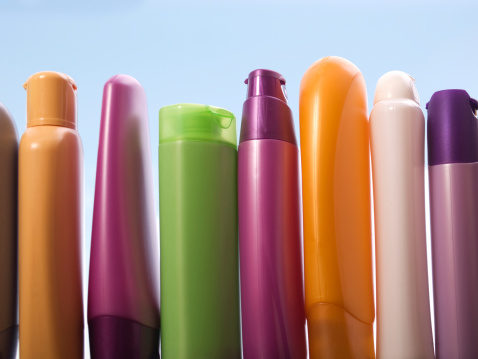
Emissions from Personal Care Products Equal Those from Cars

Decamethylcyclopentasiloxane, or D5 Siloxane, is added to personal care products to give them a smooth, silky feeling. It’s in a class of chemicals called volatile organic compounds (VOCs), which are designed to evaporate. Sunlight catalyzes reactions between VOCs and nitrogen oxides and other compounds to form ozone and particulate matter, both of which are regulated types of pollution that affect air quality and human health.
In December, 2015, and January, 2017, researchers measured VOCs from NOAA’s Earth System Research Laboratory. In February, 2016, they drove around Boulder, Colorado during rush hour, sampling the air and monitoring every one of the 150 compounds to which their instrument was sensitive. One of the compounds they found was D5 Siloxane, which, they discovered, was absent from tailpipe emissions, although it peaked at the same time as the benzene from cars.
The researchers came to the conclusion that the two chemicals peak at the same time because commuters put on personal care products and then go outside, to their cars or buses. In the evening, the peak is smaller—by then, the researchers theorize, the VOCs had mostly evaporated.
Brian McDonald, who co-authored a study that found that consumer and industrial products—personal care products, household cleaners, paints, and pesticides—produced around half of the VOC emissions measured in Los Angeles in 2010, said that this latest study “provides further evidence that as transportation emissions of VOCs have declined, other sources of VOCs, including from personal care products, are emerging as important contributors to urban air pollution.”
The data analyzed in the study suggested that “the mass emission rate of D5 from personal care product usage is comparable to that of benzene due to traffic.”

The editorial team at WholeFoods Magazine has decades of experiences reporting on natural products industry news, trends, and more. This national, monthly business-to-business magazine has been published continuously for nearly 40 years (the magazine was founded in 1977, and has been owned by Wainer Finest Communications since 1984). It is the longest-tenured media outlet of its kind in the natural products industry. The editorial focus at WholeFoods Magazine is, and always has been, on informing and educating members of the natural products industry.
The Magazine
Information
About Us
NOTE: WholeFoods Magazine is a business-to-business publication. Information on this site should not be considered medical advice or a way to diagnose or treat any disease or illness. Always seek the advice of a medical professional before making lifestyle changes, including taking a dietary supplement. The opinions expressed by contributors and experts quoted in articles are not necessarily those of the publisher or editors of WholeFoods.







